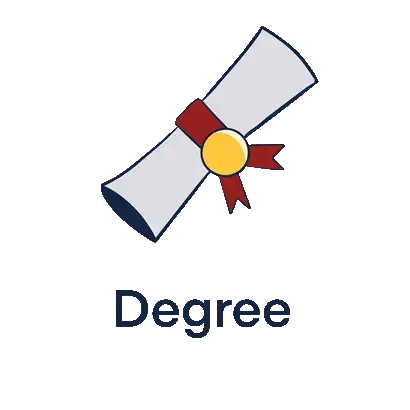11 Plus English Papers
The following papers have been written by our 11 Plus English tutors, all of whom are qualified teachers with experience of preparing students for entrance exams. They are free for anyone to use for non-commercial use. The papers are designed to reflect the various examination styles used and expected levels at 11+ English.
11 Plus English Papers - 11 papers available
Are you looking for a tutor with specific school entrance experience?
Browse our school guide
11 plus English – The Written Comprehension Paper
The written comprehension paper can often be a challenge for 11 plus applicants. Well written comprehension answers are concise, to the point and well supported, and this sometimes can be tricky for young readers to pick up. However, there are strategies your child can use to make comprehension examinations easier to tackle.
What skills are being tested?
Firstly, it is useful to understand what your child is being tested on. Below is an outline of the skills being assessed:
- Retrieval questions. These questions test the candidate’s abilities to find information in a text and are often the simplest of questions and usually worth one or two marks. For example: What was Billy wearing when he boarded the ship? Why was Sarah upset in lines 3 – 4?
- Inference and opinion questions. These are usually considered the most challenging question types. Often longer, 3 – 8 mark questions, candidates are expected to be able to infer meaning from vivid and complex language, as well as characters, plots and social and cultural themes.
- Vocabulary questions. Simply, these questions ask the candidate to write meanings for the more complex words within the context of the text. (Past words have included: shrewd, ambiguous, liminal and brackish.)
- Summary questions. These ask the candidate to summarise events in either a particular paragraph or a few lines. These answers should be clear, well demarcated and should not be excessively descriptive.
- Predictions questions. These questions ask the candidate to write about what they think will happen next. Although a seemingly straightforward question, it is important that the answer considers the narrative in a coherent way, keeping to realistic events based on what has gone before.
- Spelling, punctuation and grammar (SPAG questions). Depending on the school and comprehension paper in question, there can be a SPAG element to the paper. These questions usually consist of a paragraph where punctuation is missing, spellings are incorrect and grammar is poor. Candidates are expected to correct all the mistakes in the text.
How to use Owl Papers Comprehension Papers
Owl Comprehension papers will test your child on all the points outlined above. When tackling these comprehensions, it is important to follow some simple rules:
- Read the text in full without writing anything down. (Although many children will want to read the questions first and then try and find the answers, like a literary treasure hunt, it is important to avoid this.)
- Read the questions.
- Now re-read the text looking for the answers. I encourage underlining and highlighting, but try not to write full answers to the questions yet.
- Now it is time to answer the questions!
- Check answers.
How to answer questions
When answering all types of comprehension questions (excluding vocabulary questions), it is important that your child remembers to:
- Write in full sentences. Sometimes children struggle to start their answer. However, they can always use the question to form the beginning of their answer, just avoid starting with ‘Because …’
- Make sure their answers are well punctuated. If there is a three mark question, use punctuation to show the three different points.
- Do not over quote. When quoting from the text, there is a common error of quoting long sentences, rather than short phrases. For guidance, I usually say to my students use no more than 6 words per quote.
- Avoid repetition. It is very common when writing longer inference questions that children start to repeat themselves. Try to help your child identify if they have done this and support them with finding other points in the text.
- Use P.E.E. This is a commonly used acronym to help children answer longer inference questions. It stands for Point – Evidence – Explain, and helps children to write fully developed answers.
- Don’t forget technical language. For example, when asked Identify the techniques being used to describe the sky in paragraph 4, your child needs to find and quote any smiles, metaphors, personification, hyperbole, alliteration or onomatopoeia being used. These questions are specifically testing your child’s abilities to spot descriptive or poetic writing techniques.
- Understand the marks available. The marks given are there to help your child identify how in-depth their answers should be. If there is an inference question worth 4 marks, this usually means your child should provide at least 2 points which are properly evidenced and explained. If there is a retrieval question worth 3 marks, this means your child should find at least three items.
Finally, like with most things, practice makes perfect. If the first comprehension your child does is a disaster, don’t worry! If you follow the guidance above, the more they do the better they will become, and you will start to see a real difference.
11 plus English – The Extended Writing Paper
Often the 11 plus extended writing paper is overshadowed by its (perceived) far scarier comprehension counterpart. However, the extended writing paper is a great space for your child to show off their own ideas, personality and imagination in what can be a relatively impersonal exam process. Here, one of our top 11 plus tutors Abigail, guides us through the assessment.
What skills are being tested?
In most cases there are 25 marks available for the extended write, plus 10 for spelling, punctuation and grammar. Marks are awarded for the following:
- Imagination and originality of writing
- Structure and narrative
- Vocabulary and descriptive techniques
- Spelling, punctuation and grammar
How to use Owl Extended Writing Papers
Within one Owl English paper there includes a selection of prompts that reflect what your child will get in their actual 11 plus. These range from a single word such as Winter, to longer prompts such as Write about a controversial literary villain you know, to an unusual picture. It is important to note that the 11 plus exam will only ask your child to write about one of these ideas. However, when practising, there is no reason why you can’t use all of the prompts as different writing tasks.
A blank page can often be daunting for a child, so before your child starts to write, encourage them to think of where the story is going: what the main event will be, what the main character is like, where is it set? Often, extended writes can lose the narrative quickly and become a jumble of words with little meaning. Therefore, I would suggest spending a few minutes planning out the above points before starting to write.
Once your child has finished it is important they check their work for any spelling mistakes or grammar errors. This can often be difficult for children to do at first, so we would suggest helping them to spot any errors for the first few writes and then let them edit independently. Otherwise children will often just stare at the page, or skim read it without engaging much with their writing.
Here are our top ten tips for a great extended write
As mentioned above, the examiner will be looking to see whether your child has met, or exceeded, the skills being assessed. Here we have outlined 10 top tips to help your child meet the full writing criteria.
1. Don’t forget structure
Although the time given for the extended write does not allow for a long story, it is important there is structure and purpose to the writing. I have marked some beautifully written and descriptive papers, but which lack any storyline or plot. Remember the narrative needs to be going somewhere and structure can help keep the writing on track.
2. Choose one main event
Again, within the timeframe given there is little time to write a story with multiple events and plot twists. Try to get your child to identify what the main event is going to be and build the story around this. For example, the main event could be a shipwreck and your paragraph before is the introduction and buildup, and the paragraph after is the resolution.
3. Focus on one character
Similarly to the narrative, there is limited time to properly introduce multiple characters, so it is best to stick to one main one and have ‘supporting’ characters.
4. Start with something engaging
It is key to start with something that will draw the reader in whilst also keeping some mystery around the events to come. When I prep students, I get them to pick and learn 4 – 5 short story openers that they can adapt. This helps the child to get started and makes sure they are beginning their story with an element of surprise. (https://www.literacyshed.com is a good place to find interesting story openers.)
5. Use dialogue, but don’t tell the story through speech
It is a common error for children to tell the story through speech. Often, they will start with some beautiful description, but by the end of the write it has turned into something resembling The Archers. Unfortunately, there is no trick to get your child to use less speech other than awareness and practice. If you know your child falls into the category, get them to go back and edit their work to reduce the dialogue and up the description.
6. Use the 5 senses
When writing a particularly interesting part of the extended write, it is common for children to focus on one sense: sight. However, it is important to use all the senses (sight, smell, touch, taste, hearing.)
7. Use interesting vocabulary
It is important to use a wide range of vocabulary. However, it is equally important not to suffocate the writing with too many long and inappropriate words. Balance is key here!
8. Don’t forgot to SHAMPOO
SHAMPOO is a fun little acronym which stands for similes, hyperbole, alliteration, metaphors, personification, onomatopoeia and openers. It is a good way of getting your child to use a range of descriptive techniques.
9. Show, don’t tell
One way of getting your child to write more figuratively is to get them to show how something is behaving, rather than telling the reader. For example, a child may be upset so you could write: The child was upset and started to cry. However, a better way would be to show the child is upset by describing their features like this: Whilst the boy scrunched up his nose, his cheeks started to redden and water filled the corners of his eyes.
Lastly, don’t forget spelling, punctuation and grammar
It is no surprise your child will be marked on their correct use of SPAG. For those higher reaching 11 plus exams a wide range of punctuation is encouraged (where your child will be expected to confidently and correctly use semicolons, brackets and hyphens). In addition, the correct use of spelling patterns is expected in all 11 plus exams. However, if your child misspells a tricky word such as phenomenal, it is better they use it and misspell it instead of replacing it with a less interesting, but correctly spelt, word.
Hopefully these tips will help your child navigate the extended write with increased confidence, so they can show a little bit of their personality and creativity prior to the interview stage.




